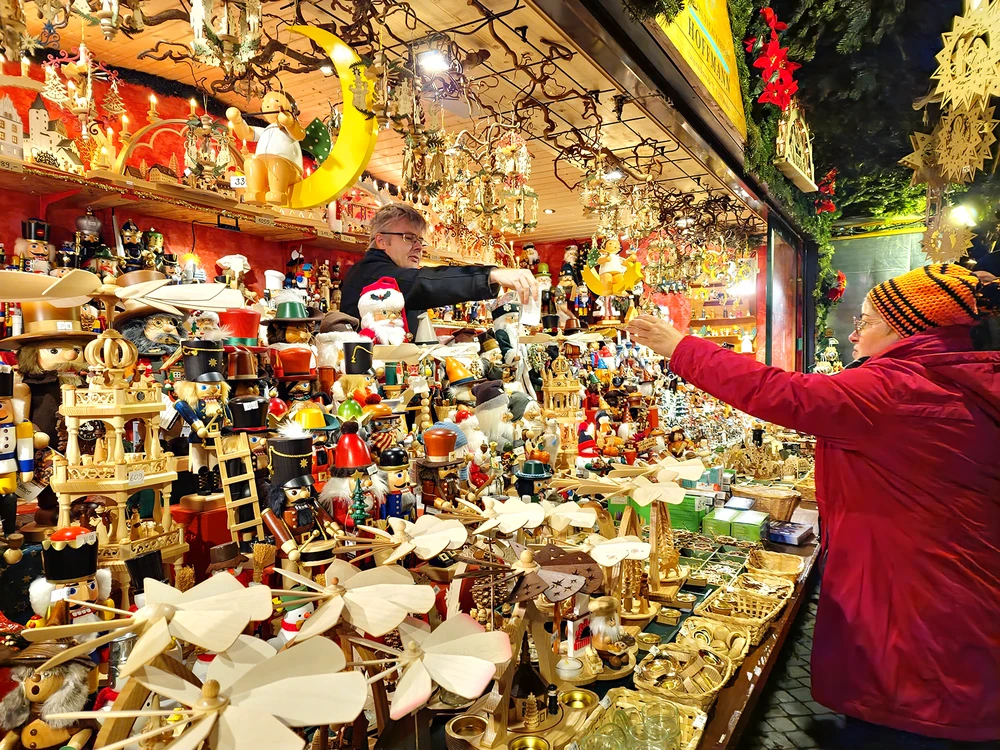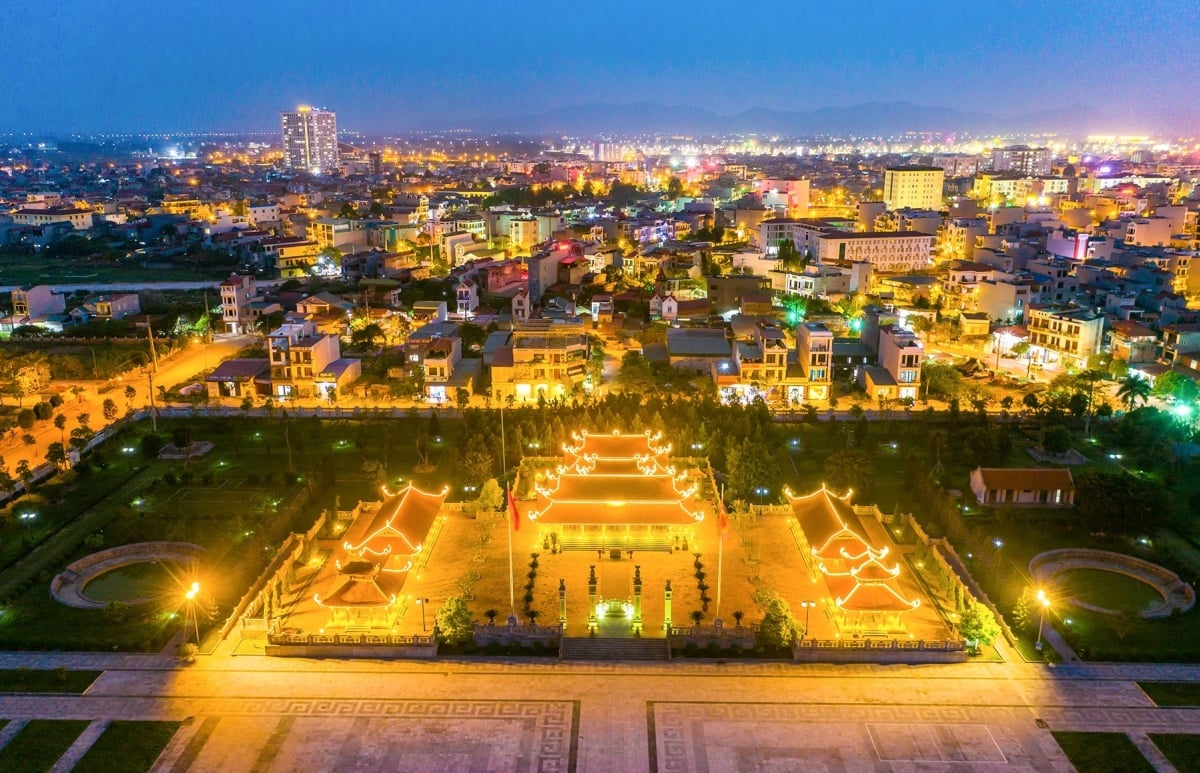Just as Vietnamese people are excited to go to the Tet market, Germans are equally excited to go to the Christmas market. The Christmas market is not a purely buying and selling market, but a festival, a long-standing traditional cultural custom at the end of the year for Germans.

Dresden is the fourth largest city in Germany in terms of area and 12th in population, especially attracting tourists from all over the world with the oldest Christmas market in Europe, Striezelmarkt - this year is the 589th.
The history of the Striezelmarkt Christmas Market dates back to late October 1434, when the market sold meat and food to the local people during the end-of-year holidays. In the 16th century, more stalls were gradually added selling Christmas decorations from the Erzgebirge mountains, cakes, sweets, candles, spices, handicrafts, etc.
On November 29, the Mayor of Dresden, Mr. Dirk Hilbert, declared the market open and about 600 lights on the giant Christmas tree lit up. People strolled around the market, watched plays, performances, let children play games, met each other, drank a cup of Glühwein with the strong smell of cinnamon, cloves... or a cup of hot fruit wine in ceramic cups, ate honey-dipped nuts, chocolate-coated strawberry skewers, sugar-coated apples, Lebkuchen; people bought Stollen Christmas cakes to take home and enjoy with their families, bought gifts for relatives and friends; went to the market to watch people and let people watch them.
Striezelmarkt not only holds a record for its age but also holds a world record in 1999 for its 6-storey wooden Pyramide. The tower is 14.62m high, with wooden statues of snowmen, Santa Claus, fairies, priests, etc., and a giant wooden pinwheel mounted on top, rotating like a lantern. Standing on the top floor of the tower, you can see the entire city center. This wooden tower is priceless, but visitors can buy much smaller towers as Christmas gifts, priced from 80 EUR to thousands of EUR, completely handmade and painted with non-toxic paint.
This year, there are 214 stalls with 1,900 artisans and artists participating in 26 days (from November 29 to the afternoon of December 24), with an expected revenue of about 42 million EUR. Many people know about Stollen cakes during Christmas in Europe, especially in German-speaking countries, but may not know that the most famous Stollaen cake comes from Dresden and its surroundings, with its own name, Dresdener Stollen.
The Stollenfest usually takes place on the second Saturday after the market opens. The giant Stollen weighing nearly 2 tons (the largest in Europe) is carried solemnly on a three-horse carriage, paraded through the central streets and divided into small pieces to sell for charity after the parade ends. This year, a 500gr piece is expected to be sold for 10 EUR. Dresdner Stollen is made with flour, yeast, milk, granulated sugar, fresh butter, candied fruit, candied lemon peel, candied orange peel, rum-soaked raisins, almond powder, almonds, lemon peel powder mixed with salt, powdered sugar and baking spices. These ingredients create the special flavor of the cake.
Visitors can also visit the Medieval Christmas Market in the backyard of the Royal Castle. Although much smaller in scale, the atmosphere here is extremely special, like returning to the past hundreds of years ago. Everything in the Medieval Market must be exactly like the Middle Ages, lit by torches, wax candles and oil lamps. Ticket collectors and vendors are dressed in medieval style with rough cloth shirts, large leather belts and prices are also written in ancient Taler coins. Of course, customers still pay in EUR, the approximate exchange rate is 1€ = 1Taler. The items, dishes and games in the market are also from the Middle Ages, with an ancient flavor. Music from the stages scattered throughout the Christmas markets makes people excited. The music from the Ferris wheels, the laughter next to the wooden houses selling hot wine, the hugs of relatives and friends chase away the cold of the European winter. It was late at night but the market visitors still wanted to stay and not go home.
TOET DANG, from Germany
Source

































































Comment (0)